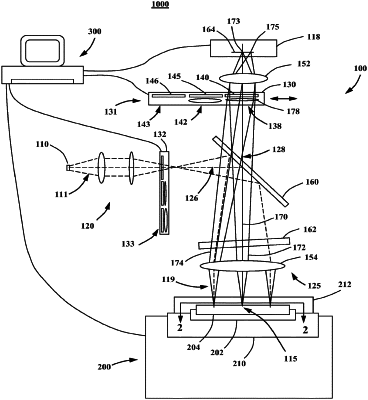| CPC G01N 21/6486 (2013.01) [G01N 21/6428 (2013.01); G01N 21/6452 (2013.01); G01N 2021/6471 (2013.01); G01N 2021/6478 (2013.01); G01N 2201/062 (2013.01)] | 17 Claims |

|
1. A method of analyzing a plurality of biological sample volumes, the method comprising:
emitting, along an excitation optical path toward a sample holder holding the plurality of biological sample volumes, electromagnetic radiation from a broadband LED, wherein the broadband LED emits the electromagnetic radiation across a range of wavelengths at a total output power of at least 5 watts and at a maximum intensity at a wavelength less than 600 nanometers and at an intensity less than 30 percent of the maximum intensity at a wavelength of 650 or 670 nanometers,
passing the electromagnetic radiation emitted from the broadband LED through a first lens along the excitation optical path, the first lens directing the electromagnetic radiation from the broadband LED to the sample holder;
receiving, by a sensor, an electromagnetic emission transmitted from the sample holder along an emission optical path; and
passing the electromagnetic emission through a second lens disposed along the emission optical path between the sample holder and the sensor.
|